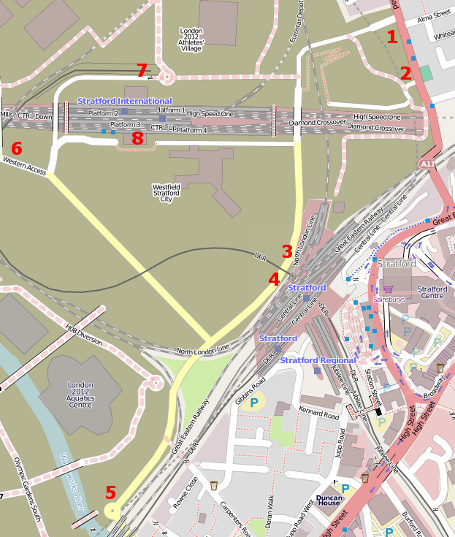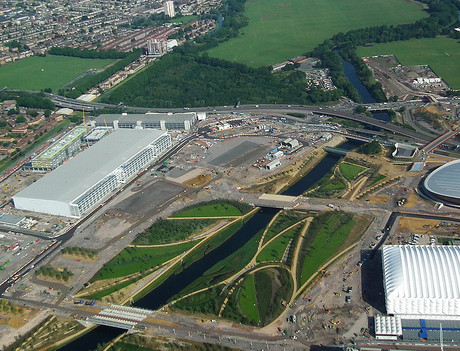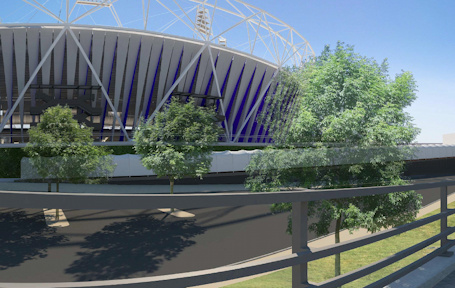I was at the Velodrome in the Olympic Park yesterday, for the opening evening of the UCI Track World Cup London stage, which was also a London Prepares test event for the forthcoming Olympics. As such, it was the first opportunity to get into the Velodrome to watch an competitive event. The only races taking part were the Team Pursuit qualifications, but it was still exciting to see 33 teams go around the track (one at a time) at impressive speeds.
Tickets were not easy to get – I got through as a local resident, and even then had to apply on the dot as registrations opened, and the ticket site slowed down. So it was a little galling to see some seats (5-10%) remain empty all evening. As many of these were “prime” seats adjacent to the finish, I wonder if these were free seats give to sponsors, who then decided that the preliminary arounds weren’t that exciting to watch.
The logistics were also a little awkward – requiring a longish bus ride from right the other end of the park. With nearly 6,000 spectators to bus, there were inevitably long queues both to get to the velodrome, and (longer) coming back. Obviously for the Olympics itself, people will be walking around the park, rather than being bussed around it.
There were some technical issues on the night – the start gate failed to release one of the riders, at one point, and the overall time system got confused for a couple of teams and arbitrarily added over a minute to the affected team’s time, as they crossed the finish line. This was particularly odd as the erroneous time had not yet elapsed, so where this extra time came from I do not know. Of course, the whole point of test events like this is to test the equipment, in a competition environment, so that come August, the bugs will have been ironed out. One non-technical “incident” was that the Spanish men – who incidentally had the most striking tops of the night – managed to get themselves disqualified, for altering a bike into an illegal configuration after it had been measured. Oops!
But enough of the negatives, it is a super venue. We entered through the door where the roof shrinks right down so it is barely 10 foot above you – and then suddenly you are in a huge, brightly lit arena, with terraces of seats disappearing into the “Pringle” shape and masses of cyclists and bikes in the race team area within the track. Certainly the entrance had more of an impact than the previous test event I went to at the Copper Box (aka the Handball Arena). The seats are more comfortable too.
The best aspect of the night though was the two times that Team GB took to the track (the Women, and later the Men). Deafening clapping and cheering from start to finish of their cycle. If they can sort the other problems, the Olympic experience here is going to be amazing.
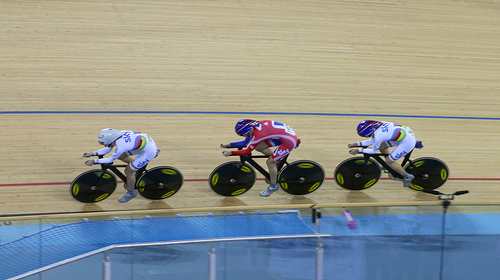
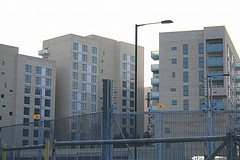
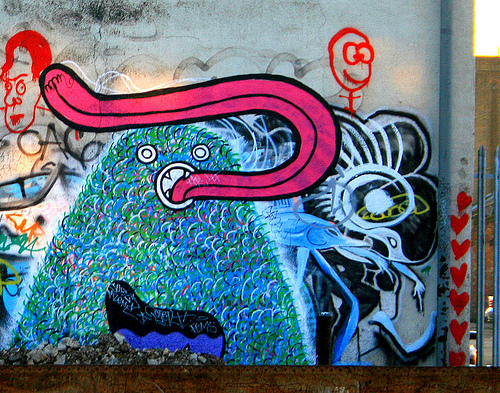

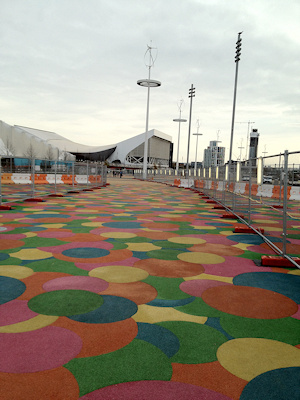 It was a bleak, windswept and chilly 1km walk from Westfield Stratford – the entry point – to the arena itself, but it did mean a walk right through the park (between temporary security fences) crossing numerous wide bridges and passing the Water Polo arena (temporary) and almost underneath the front of the Aquatic Centre. There is quite a lot of landscaping going on, and the odd tree here and there, but also large areas of hard paving, unfortunately reminiscent of the area around the O2 or Surrey Quays but I am sure necessary to cope with the huge volumes of people next summer. Hopefully the post-games conversion work will do a lot to break up the windswept plazas and soften the park area.
It was a bleak, windswept and chilly 1km walk from Westfield Stratford – the entry point – to the arena itself, but it did mean a walk right through the park (between temporary security fences) crossing numerous wide bridges and passing the Water Polo arena (temporary) and almost underneath the front of the Aquatic Centre. There is quite a lot of landscaping going on, and the odd tree here and there, but also large areas of hard paving, unfortunately reminiscent of the area around the O2 or Surrey Quays but I am sure necessary to cope with the huge volumes of people next summer. Hopefully the post-games conversion work will do a lot to break up the windswept plazas and soften the park area.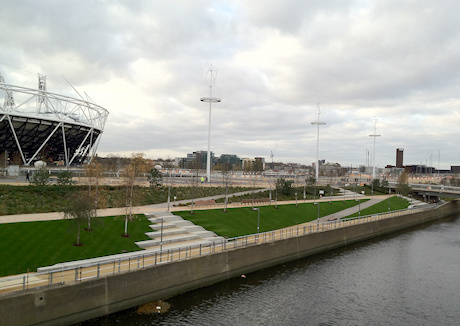
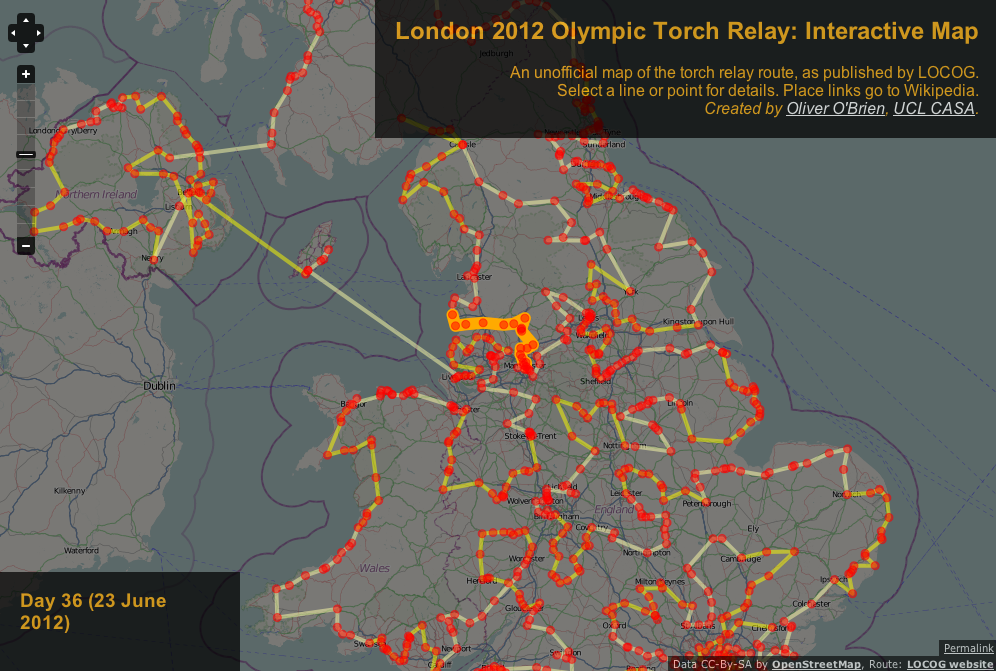
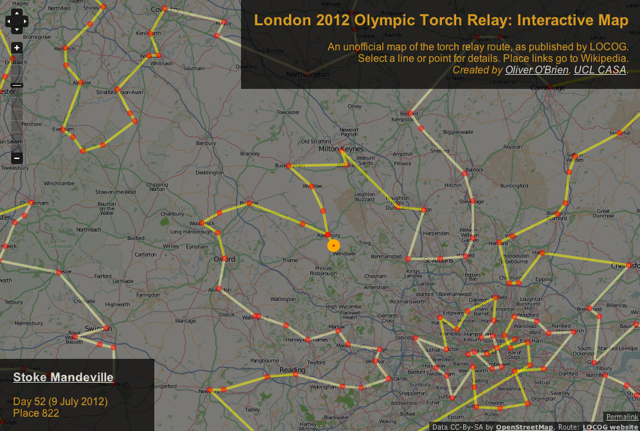
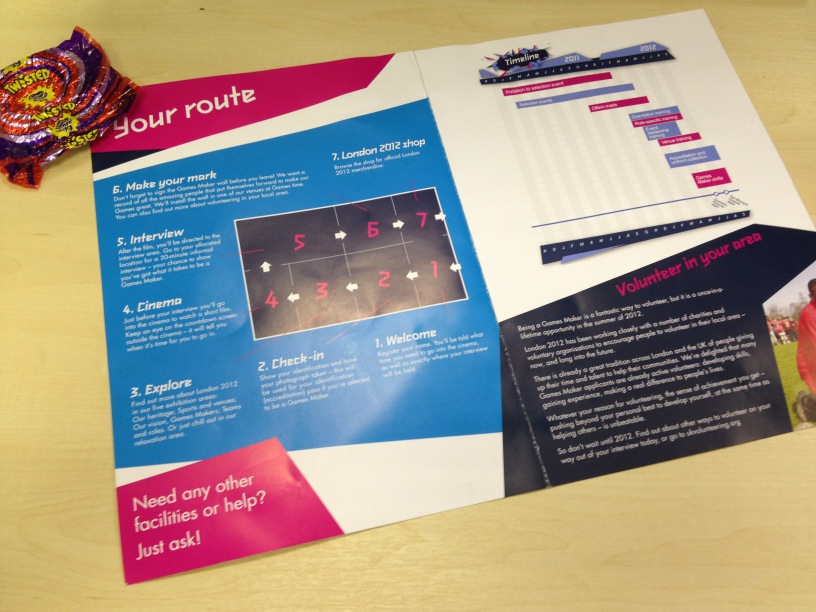
 The interviews were on the 19th floor of a skyscraper in Canary Wharf – chosen presumably because of the stunning view north to the Olympic Park, which is looking encouragingly complete these days. I guess some interviewees have found the drop from the 19th floor a bit much, because we were asked if we wanted an interview “pod” away from the windows…
The interviews were on the 19th floor of a skyscraper in Canary Wharf – chosen presumably because of the stunning view north to the Olympic Park, which is looking encouragingly complete these days. I guess some interviewees have found the drop from the 19th floor a bit much, because we were asked if we wanted an interview “pod” away from the windows…